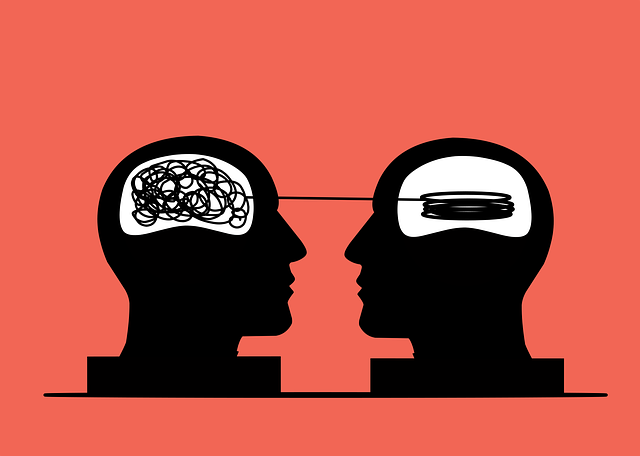
Mental Health Facility Sgns Inside
Mental Health Facility Sign Introduction
Though a mental health facility sign should only serve as an exit out of one room to another, it has much more use. Informed signs do not only orient and restore safety in a place that has proved warm to be at. They also avoid confusion instead of supplying it for support in the care side for patients and visitors in the facility.
Why Signage for a Mental Health Facility Matters?
Signages of a mental health facility would be different from others due to the premises signages. That is because the users of a mental health facility are likely to be nervous and disoriented, or both. Clear signs of emergencies and directions on observing the regulatory instructions should ensure security through good signages. It may provide a sense of safety when the signs are aware of the services and choice of support guide patients and dispel uncertainties. Lastly, access should be ensured by making availability and accessibility of the signs in such a way that all patients may easily move around the facility regardless of their disabilities
Types of Mental Health Facility Signs
Mental health facilities do not look alike; hence, mental health facilities need different types of signs to carry out specific patient functions and other visitors’ purpose in other facilities:
- Directional signs
These signs lead patients and visitors to some rooms, departments, or facilities thereby saving a patient anxiety while looking for rooms or places. They mainly indicate using arrows, names, and sometimes using maps. - Emergency Signs
Emergency exit signs, fire alarms, and routes evacuate are very conspicuous to allow the patients and staff to identify the door exits quickly and to react when an emergency occurs. - Information Sign
Information sign contains some crucial information about the facility, such as its schedules, rights of a patient, contact numbers among others and the kinds of service that are generally available.
.
Regulative Signs
These include laws and regulations for proper health and safety standards. For example, some signs have a “no smoking”, “mask is compulsory”, or are statements cautioning of restricted areas. In this respect, it ensures that individuals to observe the rules of a facility.
Elements of Design for Effective Sign Making
Effective sign making design results from effective decisions made at the designing stage from the perspective of the needs of the audience.
Typography and Font Choice
The fonts on the signs in an asylum should be readable and non-serif, so that anybody can read them. Avoid using fonts meant to be elaborately or cursive because a person becomes confused and reads and understands generally. Arial or Helvetica will work as these are highly readable.
Color Combinations
Colors evoke moods, especially when the concept you are working with is a mental health facility. You’re even more placid reading tones of blue or green; warmer tones of yellow or orange bring life into your spaces and can warm up and make inviting.

Contrasting colors are always used for the text and background so it can be read.
Symbols and Icons
All these are common symbols like Arrows, Toilet sign etc. which act as vocabulary to the unlettered and also to those who suffer from mental or physical incapacities.
Sign Location and Installation
No design of installation can ever be conceived of without having its design. Signs should be readable at many angles and distances so that one may read before reaching near it.
Entry Points: The entry points should be identified with directional signs that include either floor plans or departmental headings to assist the visitors
Hallways and Alleys: With the utilization of the hallways along with the cross-connecting alleys, the emergency signs complement the directional signs to aid in orienting a person to their location within the facility space
Rooms and Doors: With the implementation of room identification signs to help both the patient and visitor identify, it aids effectively in route-finding
Safety and Access Considerations
This is highly important to make the facilities more friendly and accessible especially within the psychotropic facility. For example take,
ADA Compliance: The sign should be constructed according to ADA specifications, that means accessible by the visually, aurally, and ambulatory disabled. This would include Braille, as well as tactile lettering, with high-contrast colors.
Non-Reflective Coating: Signs ought to be utilized with a non-reflective coating as this would offer glare points where the facility would be out of bounds for use due to natural light.
Language Options: In culture-based multiculture organizations, the possibility of signs in many languages can make all the members comfortable and catered.
Successful Psychiatric Hospital Signage Case Studies
Some psychiatric hospitals have made signages work for them. Some include,
Case Study 1: The New York psychiatric institute incorporated colorful calm signs into their institute. This lowered the level of nervousness with the patients and enhanced comfort levels.
Case Study 2: An interactive electronic board was incorporated in one center in Los Angeles. It represented statistics regarding visitations of individualized patients and improved the levels of satisfaction among the visitors.
Emotional Influence of Effective Signage to Patients
Good perceived signs and aesthetically pleasing signs do bring a feel-good factor to the patients. The good signs do;
Reduce Stress: Well-perceived signs have no nervous thoughts of losing the way, and hence safe.
Higher Self-Esteem: The patient is more likely to be in control hence improves self-esteem due to independence of being aware of how to go around the facility.
Facilities Inclusive Culture: This means welcoming the patient to the facility with the help of sign language and universal symbols.
Sign Design Incorporating Feedback
The very same creative input in terms of design can be provided by the patients, employees, and visitors. Surveys conducted on a regular basis with opinion of the staff can have a better idea about the areas where improvement is required so that signs and other graphic communication remains relevant for the users of a facility.
Common Errors in Psychiatric Hospital Signage
Effective signs can grant much benefit to a facility. Common mistakes however would undo all those positives:
Varying Message Confusing or jumbled messages that do not penetrate
Too Much Text “Information overload” or confusing that drowns the reader minds
Poor Contrast Lowly contrasting color tends to makes it hard to read easily especially for some whose eyesight are severely marred.
What are some very common signs that appear in mental health hospitals?
From the above, amongst the most common signs that exist over mental health four are essentially directional, emergency, Information, and regulatory ones that reflect a need for leading patients, information delivery, and safety issues.
A simple Soothing sign may take away the nervousness of patients, so it would be an experience more pleasing but probably anxious in the facility.
Mental Health Hospital Signs
What does the Americans with Disabilities Act require in signage at a mental health center?
Braille and Tactile letters viewing height and angle to meet high contrast of color
What can color and design do for the patient experience?
Colors and designs elements cause psychological effects. Calming colors remove apprehensiveness from people’s minds, whereas transparent and simple designs remove confusion and apprehensiveness and thus make it an enjoyable experience for patients at facilities.
Where should emergency signs be mounted?
Emergency signs should be mounted in areas for high visibility to visitors like corridors and exit points so that they may easily be read when required.
Can signs reduce frustration of patients in institutions?
Good sign design will enable the clear signs provided in such a manner that it can enable a patient to avail himself for independent mobility in institutions with minimum levels of confusion and personal control and self-efficacy.
It is such a psychological care facility’s being: It is first of all, a welcome place in respect that provides care assistance in full. That is the condition concerning the considered state that accessible and working signs address a kind of necessities of mixed communities, stress, as well as safety need to know or understand, respectively. Detail kind of understandable signs pertaining to how to manage the development process concerning the whole mental healthcare produces a proper welcome toward all patients and visitors for everyone.

